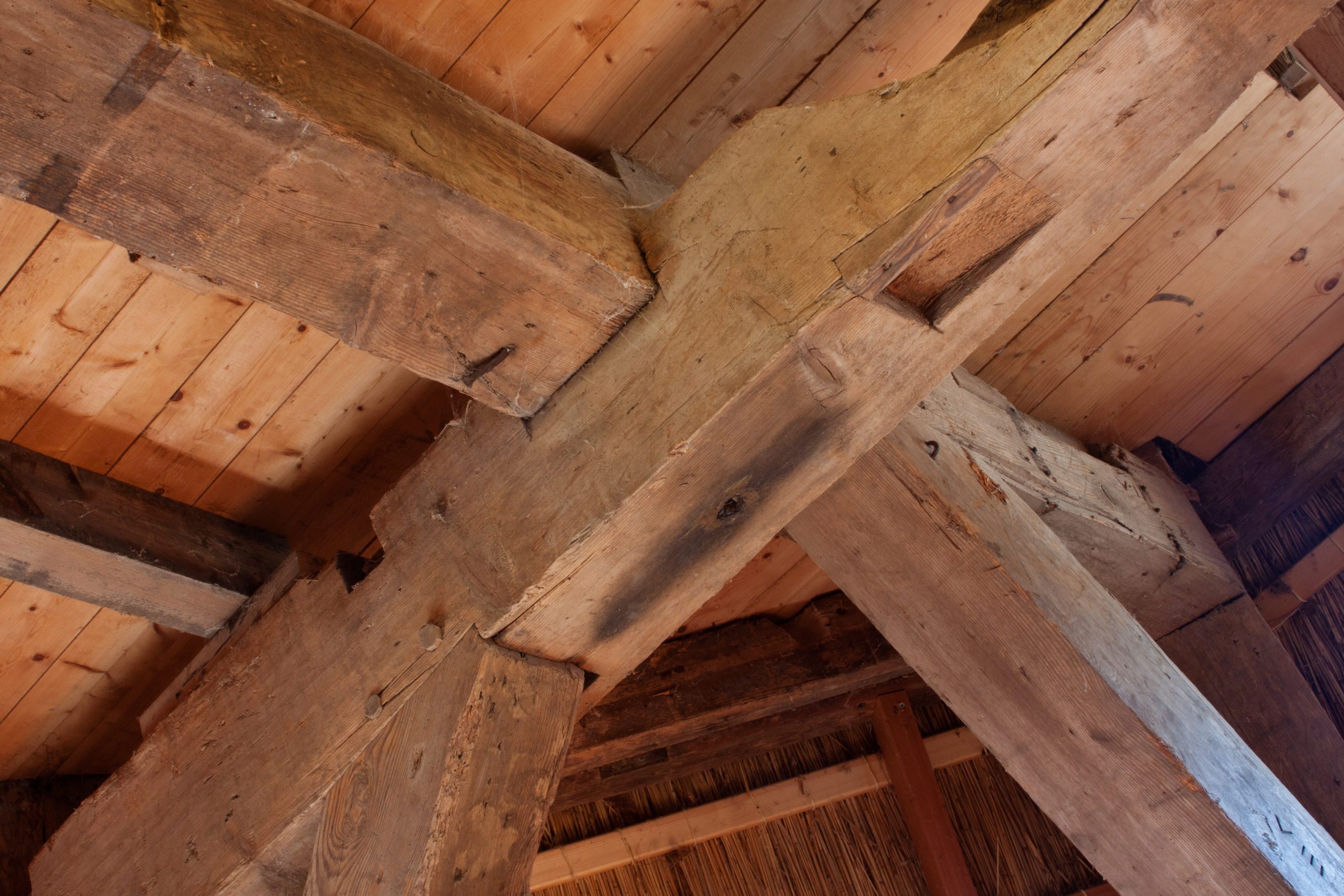
When embarking on the journey of planning and designing your timber frame home, it’s crucial to grasp how the timbers will adapt and react to their new environment post-installation. One common concern is the occurrence of timber frame cracks, specifically checking and shrinkage. In this guide, we delve into the intricacies of these processes, emphasizing their normalcy and providing practical tips to minimize their impact on your timber frame home.
Timber Checking in Timber Frames: Understanding and Minimizing
As timbers dry, the outer layers undergo a faster drying process than the inner heartwood, resulting in stresses that lead to the separation of wood fibers, commonly known as checking.
This natural occurrence does not compromise the structural integrity of the timber; in fact, as wood dries, it becomes stronger.
Minimizing Timber Checking
To minimize timber checking, consider specifying “Free of Heart Centre” timbers and opt for the use of air dried timbers. Air Drying, although a lengthy process, is a more natural method that, when combined with planing, can reduce surface checks. Another sustainable approach is the use of recycled wood, sourced from dismantled buildings, which has dried slowly over time and is exceptionally stable. Utilizing a natural and breathable sealer for timber products aids in the slow release of moisture, preventing excessive checking. Embrace checking as a naturally occurring characteristic that adds to the aesthetic appeal of your timber frame home.
Shrinkage in Timber Frames: Embracing Natural Movements
Shrinkage is a dimensional change in timber during the drying process, influenced by the wood’s moisture content. This process, which includes slight twisting and checking, does not compromise the structural integrity of the timber.
Minimizing Timber Shrinkage
While shrinkage cannot be entirely eliminated, it can be minimized. Timber will eventually reach “equilibrium moisture content,” aligning with the moisture in its surrounding air. However, changes in the surrounding air can cause fluctuations, resulting in wood movement. Understand that timber checking and shrinkage are inherent features of timber frame homes, contributing to their unique charm.
Finishing and Maintenance for Longevity
Timber frame homes stand out for their durability and efficiency. Prior to shipping, timbers are treated with two coats of water-based stain to protect against exposure. Water-based stains enable the necessary moisture to escape, preserving the timber. During the initial years, maintaining a consistent, low temperature is advisable to prevent erratic drying and excessive checking.
Sap Residue and Timber Frame Care
In addition to timber checking and shrinkage, homeowners may encounter sap residue, especially if timbers weren’t kiln-dried. If sap emerges due to heat exposure, promptly address it using a dull putty knife and a scotch pad with denatured alcohol. Regular paint thinner can also be used. However, it should be noted that any time a solvent/cleaner is used it may affect the finish and should be tried in an inconspicuous area before using on a larger scale. This quick, gentle removal process safeguards your timber frame’s finish and complements the broader strategy for maintaining the natural beauty and structural integrity of your home. One also wants to be quite gentle when using scrapers and abrasives to minimize the amount of touch up work required. Some stains/colors can be more difficult to touch up.
Annual Inspections and Maintenance
Regularly inspect and maintain exterior timbers, applying additional stain every four years at a minimum. Dark pigments in stains enhance durability and provide UV protection, especially for exterior treatments.
Understanding the natural processes of checking and shrinkage in timber frames empowers homeowners to embrace these characteristics as part of the inherent beauty of their homes. By following the recommended practices, you can ensure the longevity and aesthetic appeal of your timber frame home. If you have any questions about your timber frame home, please contact us!
Blog Archive / Celebrating the 20th Anniversary of the Kokanee Glacier Alpine Cabin